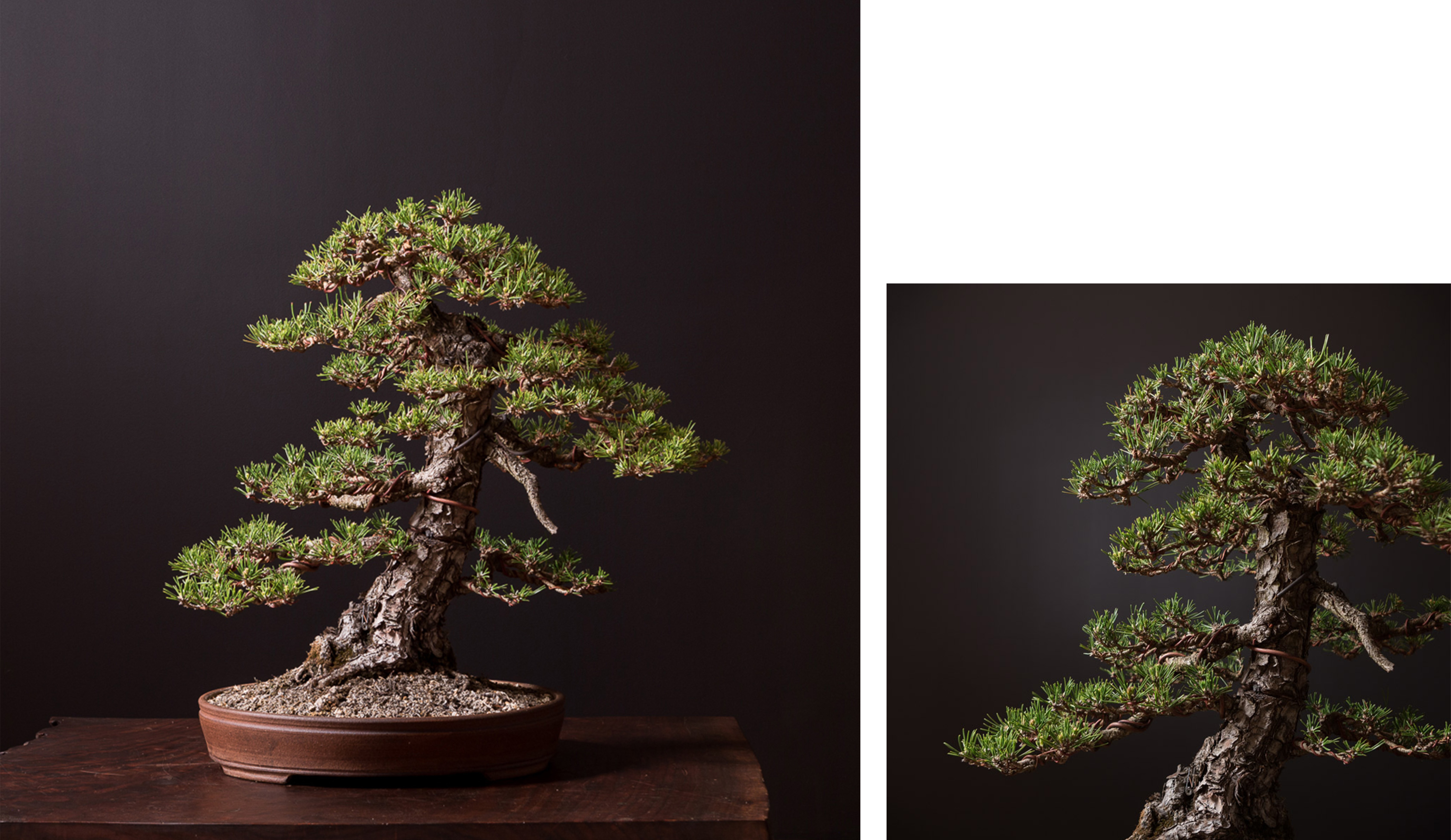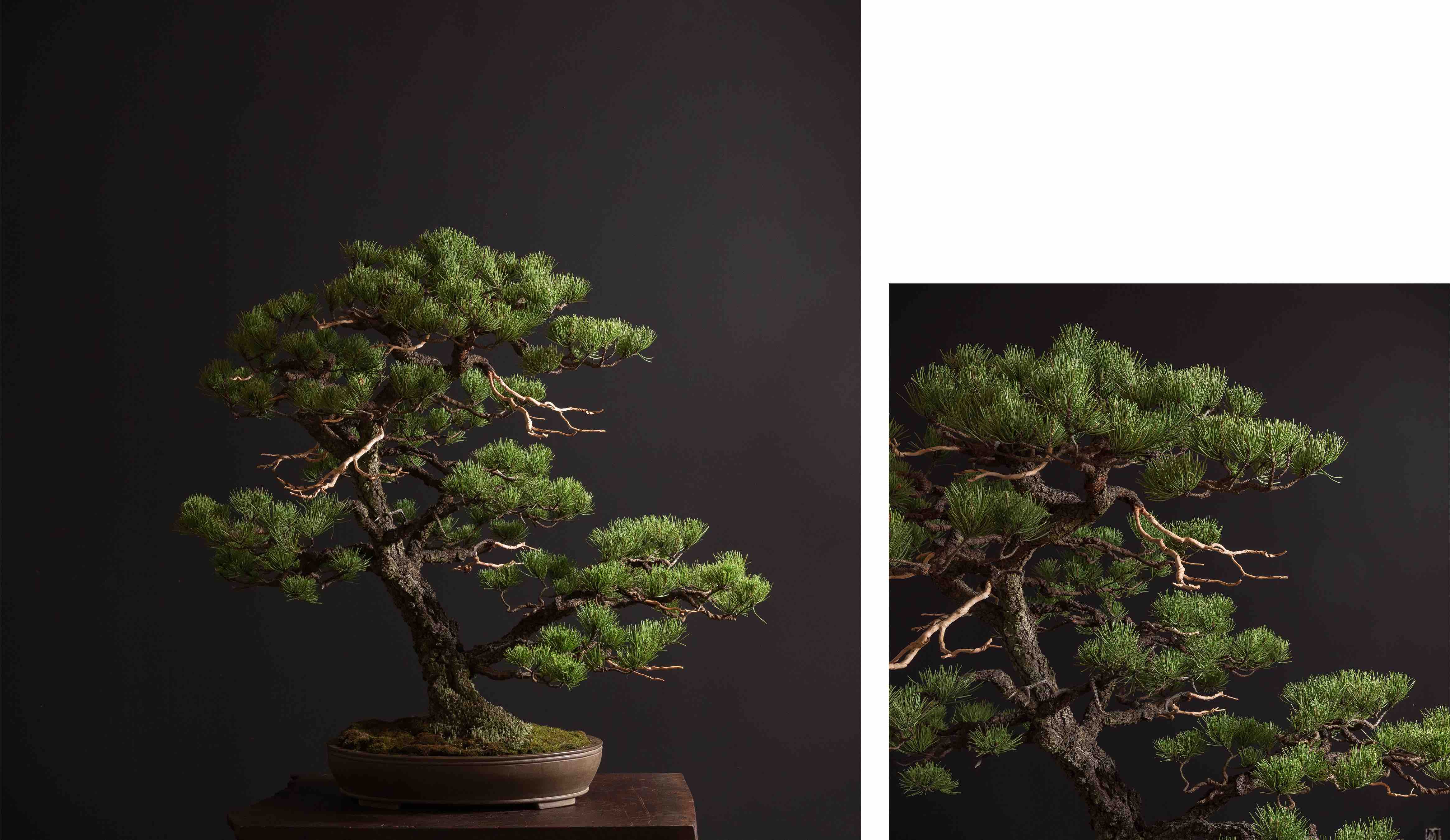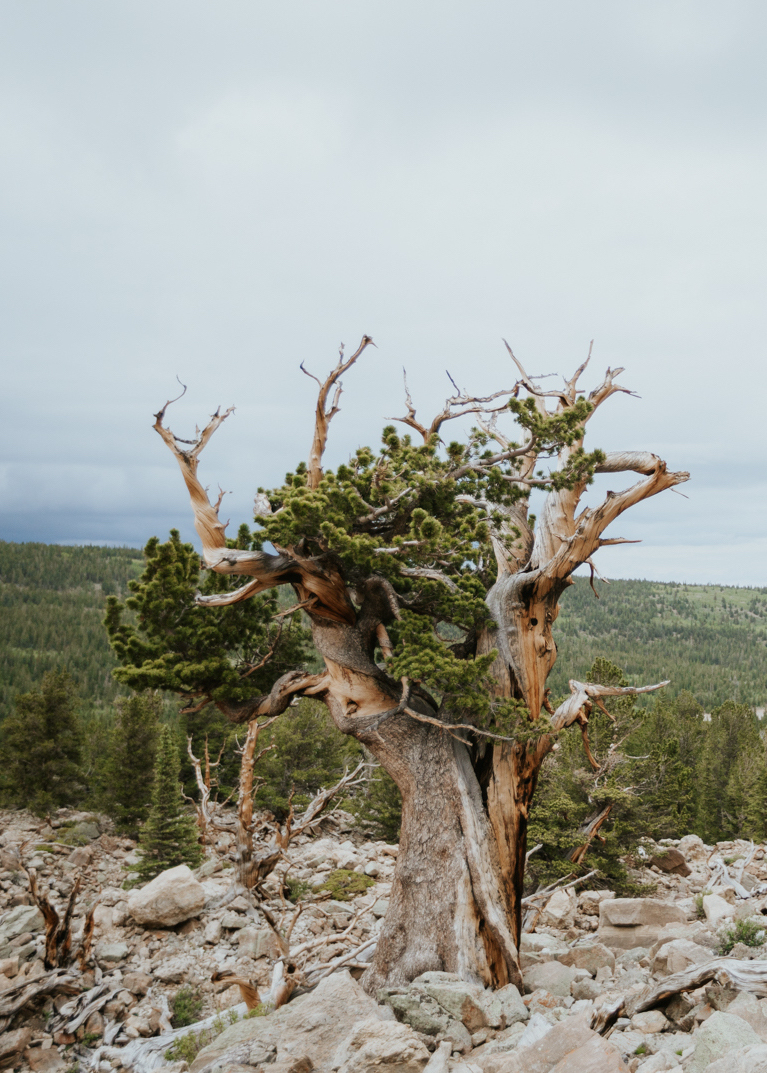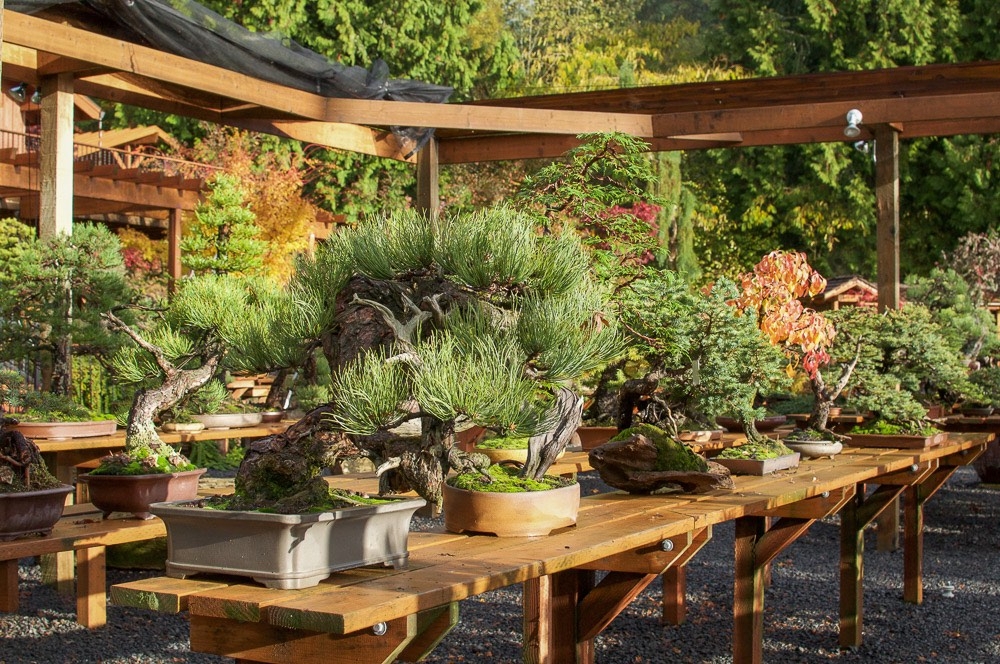a comprehensive guide to understanding the different pine species and subgenres
Pines are the oldest living trees on earth. This remarkable coniferous species, known for its iconic needles, rugged bark, and towering size, has been the backbone of civilization for millennia. At times exceeding heights over 150 feet, pines are one of the tallest trees on earth. The champion among them, ponderosa pine in Southern Oregon, defied all conventional notions of plant growth by reaching an astonishing 268 feet in height. With over 800 species, pines form the most prominent family of conifers. Predominantly found in the northern hemisphere, these majestic trees are icons of size and age. They play a crucial role as apex species, supporting entire ecosystems and the forests they inhabit.
In the bonsai world, pines hold a special place as an iconic representation of age and beauty. Their bark, powerful bases, elegant trunks, sweeping branches, and needle clusters contribute to their aesthetic appeal. Pines possess a diverse range and capacity to represent various forms and styles as bonsai. To successfully work with such an eclectic species, one must understand their growth habits, response to techniques like pruning, pinching, and plucking, and the appropriate timing for these practices. A deep dive into the environmental origins of different pine species helps bonsai enthusiasts grasp the horticultural conditions each pine can tolerate. This tolerance is not something to mimic, but it provides insight into care and aesthetics that empower practitioners to maximize a given pine's potential to reflect nature in miniature. From the multi-flush pines of southern Japan's Shikoku islands to the short-needle, single-flush pines of temperate mountainous regions across the northern hemisphere, pines exist in various environments. Still, the long-needle, single-flush pines of North America and Europe's dry, southern slopes greatly contrast the unpredictable shapes and forms of the lesser-known Mediterranean varieties of outlier pines. The diversity of pine species' cultivation strategies and aesthetics is abundant.
Bonsai has a long and evolving history, starting around 700 AD as the art of Penjing in China before moving to Japan and eventually spreading across the Western world. Throughout this journey, pines have been a pillar of every culture's interpretation of nature in miniature. In the modern era of bonsai, amongst artistic innovation and horticultural advancements, the pine still stands as the sentinel of bonsai. Its adaptation as a subject to new-age techniques can be explored through four diverse sub-genres that reflect the eclectic nature of the modern bonsai practice. Only through considering the various conditions in which these pine species originate can bonsai practitioners do justice to the timeless character of nature's most diverse, magnificent, and adaptable conifer.

"These majestic trees are icons of size and age and play a crucial role as apex species, supporting entire ecosystems and the forests they inhabit."

1. Subgenre: Multi-Flush Pine
Multi-flush pines stand as the pinnacle of water mobility within the realm of pine trees. These pines, belonging to species capable of generating more than one growth spurt in a single year, each maturing into a full needle mass, epitomize this unique trait. The origin and essence of pine knowledge and bonsai artistry trace back to a foundational and traditional tree—the Japanese black pine. Indigenous to the southern islands of Japan and thriving in coastal environments subject to monsoons and typhoons, this tree's exceptional adaptation to such conditions allows it to undergo multiple growth spurts at a remarkable pace, characterized by heightened water mobility. This, in turn, enables the practice of decandling, a technique performed during the early part of summer. This procedure grants the tree the time it needs to generate a second wave of growth, marked by shorter inner needles, more compact notes, and more robust ramification—a direct result of the decandling process.
This remarkable ability to undergo rapid, successive growth isn't exclusive to the Japanese black pine; it extends to other pines found at lower foothill elevations, like the Japanese red pine (Pinus densiflora). Manipulating the needle distribution across the bonsai structure is a practice that channels the energy of multi-flush pines. This endeavor ensures that each branch can partake in photosynthesis and transpiration equally, benefiting from the vigor sourced from the roots and extended through these branching tips. This careful water distribution exploits the notable water mobility behavior of these pines.
Undoubtedly, the multi-flush pine category holds immense influence within pine bonsai. It is a sub-genre that requires extensive handling and practice. Unfortunately, this significance often leads to the mishandling and mistreatment of other pine species. Though belonging to different sub-genres, these pines are sometimes treated as if they share the same rapid growth rate, water mobility, and capacity to respond favorably to needle mass reduction and new growth pruning—much like the multi-flush pine sub-genre does. Recognizing and appreciating the distinctions between these sub-genres and their respective behaviors is crucial. This understanding guides us to treat multi-flush pines with singular focus and devotion. Their exceptional and consistent response to the decandling operation and needle plucking sets them apart, encapsulating the radical beauty of this sub-genre.

multi-flush pines:
Asia
Japanese cork bark black pine - Pinus thunbergii ‘corticosa’
Japanese black pine - Pinus thunbergii
Japanese red pine - Pinus densiflora
North America
Loblolly pine - Pinus taeda
Monterey pine - Pinus radiata
Pitch pine - Pinus rigida
Virginia pine - Pinus virginiana
2. Subgenre: Short Needle Single-Flush Pine
The short needle single-flush pines category is a significant modern bonsai classification. This distinction has allowed us to comprehend a previously undefined subgenre of pine trees. This comprehension has only been possible in the recent decade due to the evolution of modernized bonsai techniques and practices. These pines fall under moderate water mobility, deriving their strength primarily from their roots. Remarkably, they possess an inherent ability to produce short needles, even when subjected to the manipulation of their new growth.
This process involves a strategic sequence of pinching, which facilitates energy transfer. The journey starts with redirecting energy from strong candles to medium ones, from medium to weak ones, and finally, from weak candles to emerging buds over the spring season. This orchestrated transition channels the strength from the roots into the foliar mass, refining the short needle single-flush pines. The inception of knowledge regarding short needle single-flush pines can be traced back to a genetic mutation observed in the Zuisho white pine. This mutation, a fortuitous shift in behavior, occurred serendipitously in the garden of Daiju En. This event spurred an understanding of handling and distributing strength within these pines, an understanding that has echoed across the Western world. This potential-rich subgenre encompasses various bonsai subjects, including the Mugo pine and Scots pine of Europe and North America's lodgepole pine and shore pines
Numerous other short needle single-flush pines have joined this remarkable array of bonsai species, forming a diverse arsenal that empowers bonsai practitioners. These practitioners seize the opportunity to maximize the potential of the single annual growth flush, an opportunity that demands precise handling to channel the spring energy push effectively. This distribution, radical and sourced from the roots, is pivotal in the evolution of these trees as bonsai subjects, refining them to reach the zenith of bonsai aesthetics.

short needle single-flush pines:
Asia
Zuisho white pine - Pinus parviflora 'Zuisho'
Europe
Mugo pine - Pinus mugo
Scots pine - Pinus sylvestris
North America
Lodgepole pine - Pinus contorta latifolia
Jack pine - Pinus banksiana
Shore pine - Pinus contorta

3. Subgenre: Long Needle Single-Flush Pine
Long needle single-flush pines represent the the least water mobility within the broader pine genre. These pines inhabit south-facing high-elevation rock outcroppings, displaying the remarkable ability to endure exceedingly challenging conditions characterized by low moisture, intense sunlight, and high temperatures. Their capacity to aptly respond to these harsh circumstances becomes a defining trait, with only the most resilient specimens surviving. On an annual basis, these pines generate a specific amount of surface area through needle elongation. This crucial adaptation facilitates both photosynthesis and transpiration, enabling efficient water movement.
However, it's vital to recognize that the techniques employed for multi-flush and short needle single-flush pines cannot be directly applied to long needle single-flush pines. Such application would lead to the depletion of the tree's energy reserves in its roots. Additionally, any lost new growth would trigger an exponential elongation of the remaining needles as compensation. Consequently, long needle single-flush pines require delicate handling, minimizing interventions. It's a practice that acknowledges the infrequent interaction with these trees.
A pivotal moment in the care of these pines arises when their third-year needles drop. This juncture presents the opportunity to prune, adjusting the overall shape. This pruning involves a conservative reduction of bottom-growing needles and the refinement of branching. This process embraces a slow, methodical approach that genuinely appreciates the stability and consistency inherent in this specific bonsai subgenre. This deliberate and patient appreciation reveals these pines' beauty and charm. Their evolution unfolds over an extended period within the bonsai practice, contributing to their distinct allure.

long needle single-flush pines:
Asia
Japanese white pine - Pinus parviflora
Europe
Swiss stone pine - Pinus cembra
North America
Eastern white Pine - Pinus strobus
Foxtail pine - Pinus balfouriana
Great Basin bristlecone pine - Pinus longaeva
Jeffrey pine - Pinus jeffreyi
Limber pine - Pinus flexilis
Ponderosa pine - Pinus ponderosa
Rocky Mountain bristlecone pine - Pinus aristata
Southwestern white pine - Pinus strobiformus
Western white pine - Pinus monticola
4. Subgenre: Outlier Pine
Outlier pines mark the most recent classification or subgenre in pine handling within the realm of bonsai. This classification pertains to pine species that don't readily produce back buds, hindering the creation of the desired density and intricately branched structure that effectively distributes the considerable power and strength originating from their root systems. Consequently, achieving a proportional canopy that accurately reflects nature on a miniature scale becomes a substantial challenge. Reducing needle length in these pines also requires integrating techniques from several other subgenres.
Several techniques from previously mentioned subgenres are employed to manage the growth and establish density and desirable needle length. This process encompasses a range of species, from the stocky and determined Austrian black pine, known for its reluctance to produce back buds, resulting in coarser growth patterns and structurally compromised arrangements in its natural habitat. However, this very characteristic presents significant potential within bonsai, where techniques like decandling can stimulate back bud formation. Subsequent growth is managed with an approach akin to the long needle single flush pine technique.
The Mediterranean varieties of pines, including the Italian stone pine, Aleppo pine, pitch pine, pinion pine, and other pine species not yet officially classified but hypothesized to share similar behavior, also fall within this subgenre. Decandling these Mediterranean-behaving pines and subsequent handling via the short needle single flush pinching process forms a unique regimen. This combination of techniques characterizes these outlier pines, a subgenre marked by complexity and quirkiness. Unlocking their bonsai potential necessitates a profound physiological understanding, reflecting the highest level of mastery.

outlier pines:
Europe
Aleppo pine - Pinus halepensis
Austrian black pine - Pinus nigra
Italian stone pine - Pinus pinea
Turkey pine - Pinus brutia
North America
Pinyon pine - Pinus edulis

Pines forever stand as incredible representations of a tree's spirit and durability in its natural habitat. Thriving in some of the harshest and most rugged conditions, they develop adaptations that enable survival against all odds. By tapping into the bank of energy stored in their root systems and gleaning insights from their native environments regarding physiological adaptations and potential opportunities, we gain access to the diverse potential encapsulated within each subgenre. This journey unveils the possibilities achievable within the art of bonsai, harnessing the rich diversity of over 800 pine species native to our beautiful planet Earth.
"Pines forever stand as incredible representations of a tree's spirit and durability in its natural habitat. Thriving in some of the harshest and most rugged conditions, they develop adaptations that enable survival against all odds."


